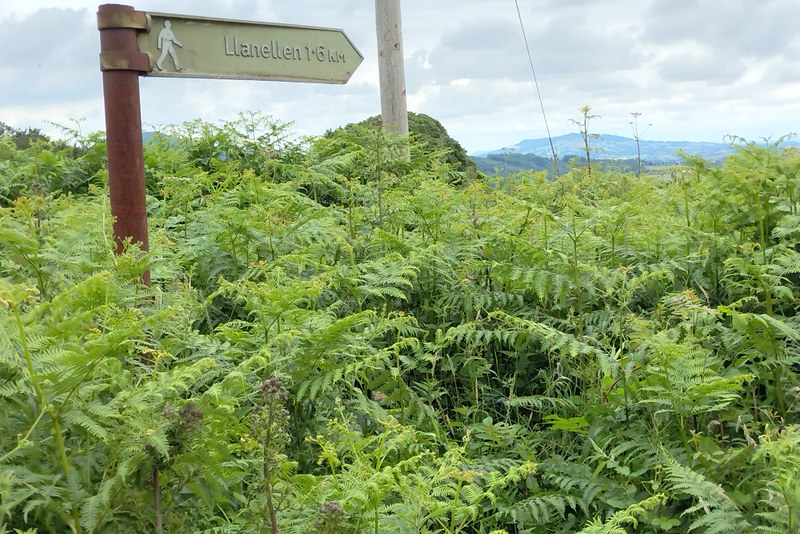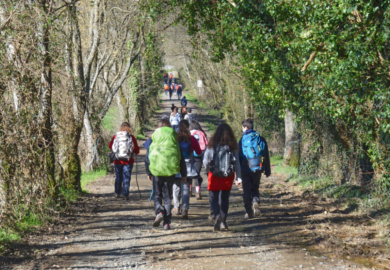We’ve created walking routes in various countries across Europe and I’m pleased to say that encountering problems with paths being blocked/interfered with by landowners is a rarity. So, we were disappointed and angered a couple of days ago to find not one but two instances where a landowner’s action, or inaction, made a public right of way in Somerset more difficult for walkers to access. In one instance, it even created a danger for users. Trying not get mown down by traffic had me eager to research who is responsible for public rights of way in England and Wales.
Examples of interference in public rights of way
The experience highlighted two different approaches to ‘blocking’ paths. The first was where the landowner had installed an electric fence almost right to the border of a field, the encroaching woodland and shrubbery leaving virtually no room for anyone to pass. Luckily, it involved only a short detour to re-join the path, but part of that detour meant walking along a section of a busy road where there was no verge. The second instance, a few hundred metres later, involved a section of path being left untended so that grasses had grown to knee height. The path itself was invisible, especially where it looked like an impassable barrier of nettles and brambles as it crossed a ditch. A local farmer pointed out where the path should be, explaining it was overgrown because hedgerows couldn’t be cut till September. Having lived on a farm until relatively recently, I already knew this. I also knew the section in question wasn’t a hedgerow. I believe the farmer was trying to pull a fast one. One case of blocked path on someone’s land might be an oversight. Two or more cases feels like a deliberate attempt to deter walkers.
Who is responsible for keeping a public right of way passable?
In England and Wales, the responsibility for maintaining footpaths is divided between landowner and the highways authority. But where the highways authority is responsible for maintaining the surface of the path, according to specialist lawyers and farmers’ advisory websites, farmers and landowners are responsible for ensuring paths are not obstructed.
And the rules regarding this are quite specific. There is no ambiguity. These involve:
- Managing any overhanging or encroaching vegetation that might obstruct the right of way.
- Not cultivating or disturbing a footpath around the edge of a field.
- Providing and maintaining stiles and gates on paths to keep them safe and convenient for public use. Landowners are eligible for a grant to help with this. In fact, there are several grants that can be accessed relating to paths.
- Ensuring that if paths run across fields, they are kept free from crops. However, if a path is affected by cultivation, it must be reinstated within 14 days if a crop is being sown, or within 24 hours otherwise.
- Where the path is a bridleway, landowner must ensure the width of the path is least 3m. For footpaths, this is reduced to a minimum of 1.5m. Where bridleways and paths cross fields, this is reduced to 2m and 1m respectively.
Consequences of interfering with public rights of way
Bluntly put, landowners can be prosecuted if they cultivate any field to the edge and it involves destroying a public right of way. No responsible walker wants to do it, but they have the right to walk over crops growing on or over a public right of way. Obstructing a path is a criminal offence, and that includes electric fences. Additionally, landowners can be prosecuted for keeping any potentially dangerous animals on land where there is a right of way.
What to do if you encounter blocked public rights of way?
Report it to your local authority. Whether anything is done is another matter. Here in Somerset, there is an interactive map which is very useful in identifying problem areas (roam.somerset.gov.uk) and on which, users can report problems. It’s a great idea in theory. In reality, many issues seem to remain unresolved.
My mother’s side of the family are farmers, I know what a difficult job they do, and am annoyed by walkers who disrespect the land they cross as much as I am by landowners who abuse their positions. Ultimately, nobody wants friction between landowners and walkers. Thankfully, mostly there isn’t, and both groups co-exist without having a detrimental impact on the other. But it is important to fight back against rogue landowners who attempt to chip away at our rights.





